Pickled Radishes
From the Spring Share 2017 article Radishes: How do I cook with…
In the family of root vegetables, the radish is like the cool cousin who has a bit of an attitude. It boasts bold color, crisp texture and fresh crunch with a bit of a kick. But there’s a whole gang of radishes at the Wedge, each with its own unique persona and uses to expand your menu beyond the usual salad topping. Here’s our guide to local radish scene.
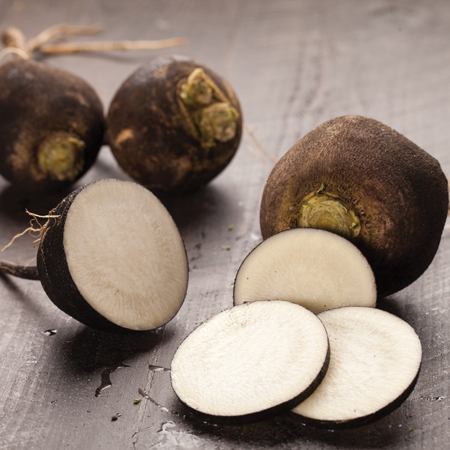 High in vitamin C and glucoraphasatin, this radish is the spiciest of all with an earthy, pungent flavor. It’s usually peeled and can be eaten raw, cooked, or juiced. It’s excellent for pickling or grating (like horseradish). Use it to fight the common cold by digging out the center and mincing, and mixing with honey. Refill the radish hole with this honey-radish mixture, refrigerate overnight, bring to room temperature and drink.
High in vitamin C and glucoraphasatin, this radish is the spiciest of all with an earthy, pungent flavor. It’s usually peeled and can be eaten raw, cooked, or juiced. It’s excellent for pickling or grating (like horseradish). Use it to fight the common cold by digging out the center and mincing, and mixing with honey. Refill the radish hole with this honey-radish mixture, refrigerate overnight, bring to room temperature and drink.
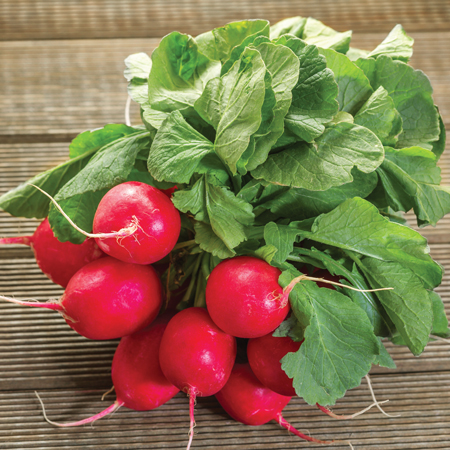
Also known as cherriette radish, this is perhaps the most popular of its family. Contains vitamin C and the active enzyme myrosinase. Slice it thin and toss in stir fry, kimchi, salads, soups or onto tacos. It’s used in many Asian cuisines including Japanese, Chinese, Vietnamese and Pakistani.
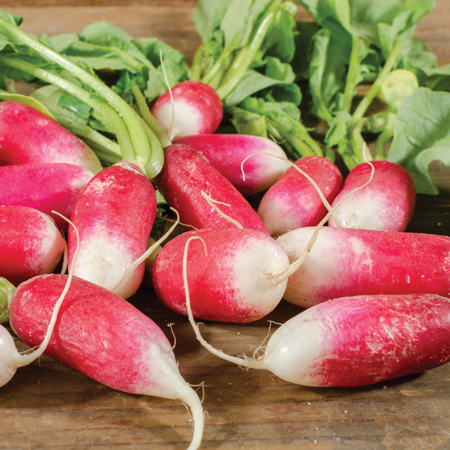
Can be round but most are oblong and two to four inches in length. Vivid fuchsia-red to bright white at the tip, these are usually sold with the greens which are edible and delicious! Grilling or roasting will bring out their sweetness. They contain vitamin C, calcium, magnesium, folate and potassium. All radish varieties contain glucosinolates, which have been shown to be beneficial in the prevention of certain cancers and are what give radishes their distinct peppery flavor.
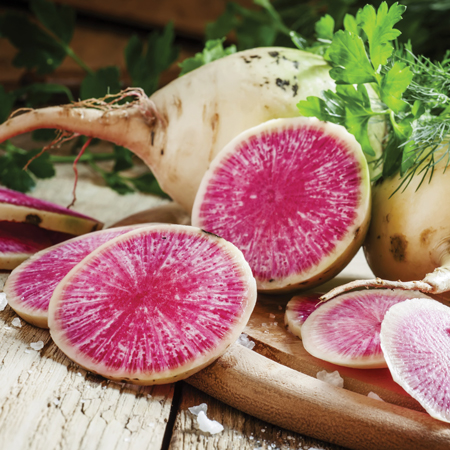
Also known as the watermelon radish. The surprise lies within. Though white and green on the outside, it is beautifully pinkish-purple on the inside! This radish is an heirloom variety of the Daikon radish. The high sugar content allows the beauty heart to be seared or roasted easily, and they’re commonly used for their added color and crunch. Enjoy them fresh by quartering the sliced rounds to use as chips for guacamole.
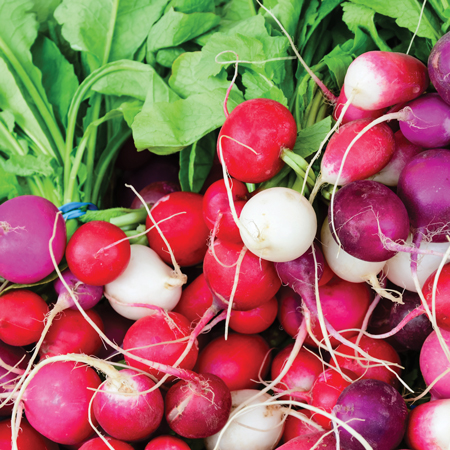
This delicious variety can be white, pink, red or purple. The radish is round and is usually sold by the bunch with the edible greens intact. Enjoyed in a bounty of ways: slice it thin to add flavor, texture and color to salads; display as-is on a crudite plate; their beautiful color palette makes for artistic tartines with just bread, butter and salt; chop and add to tacos and sandwiches for added crunch and zing; or roast them to bring out their natural sweetness. Young radish greens are edible as well—toss both radishes and their greens into stir-fries and salads for a nice burst of flavor.
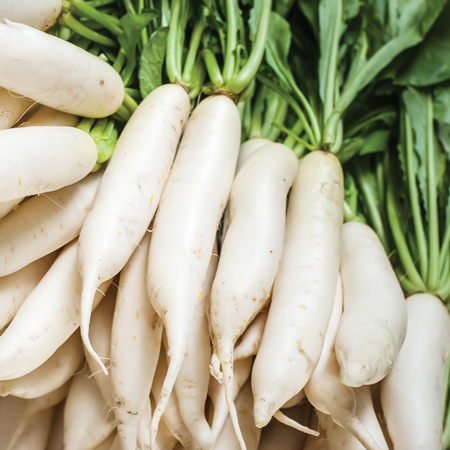
This white (or purple), mild-flavored winter radish is one of the largest of its family, ranging from six to 15 inches long. With a sweet flavor and a spicy bite, they are used in many Asian dishes, like pickled with carrots for banh mi sandwiches or grated raw and served with sashimi, or fermented with cabbage into Korean kimchi.
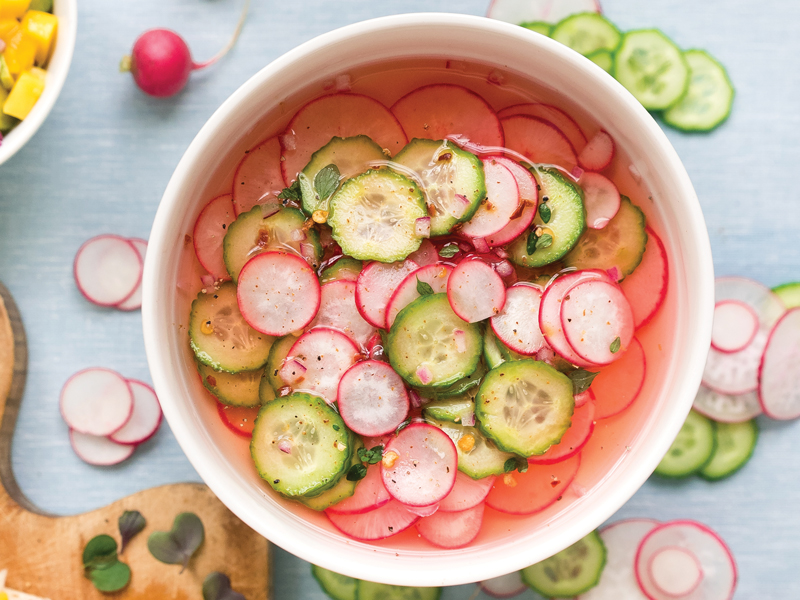
From the Spring Share 2017 article Radishes: How do I cook with…
Back to Spring Share 2017 articles
We use cookies to improve your experience on our site. By using our site, you consent to cookies.
Manage your cookie preferences below:
Essential cookies enable basic functions and are necessary for the proper function of the website.
These cookies are needed for adding comments on this website.
Google reCAPTCHA helps protect websites from spam and abuse by verifying user interactions through challenges.
Google Tag Manager simplifies the management of marketing tags on your website without code changes.
Statistics cookies collect information anonymously. This information helps us understand how visitors use our website.
Google Analytics is a powerful tool that tracks and analyzes website traffic for informed marketing decisions.
Service URL: policies.google.com
Marketing cookies are used to follow visitors to websites. The intention is to show ads that are relevant and engaging to the individual user.
Facebook Pixel is a web analytics service that tracks and reports website traffic.
Service URL: www.facebook.com
You can find more information in our Cookie Policy.